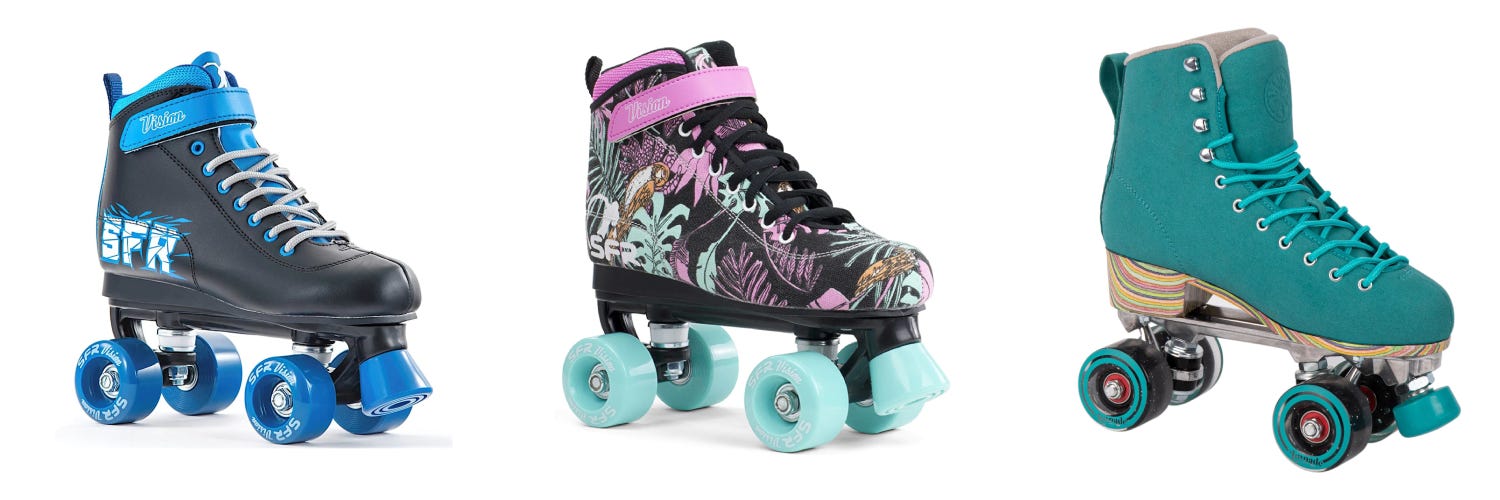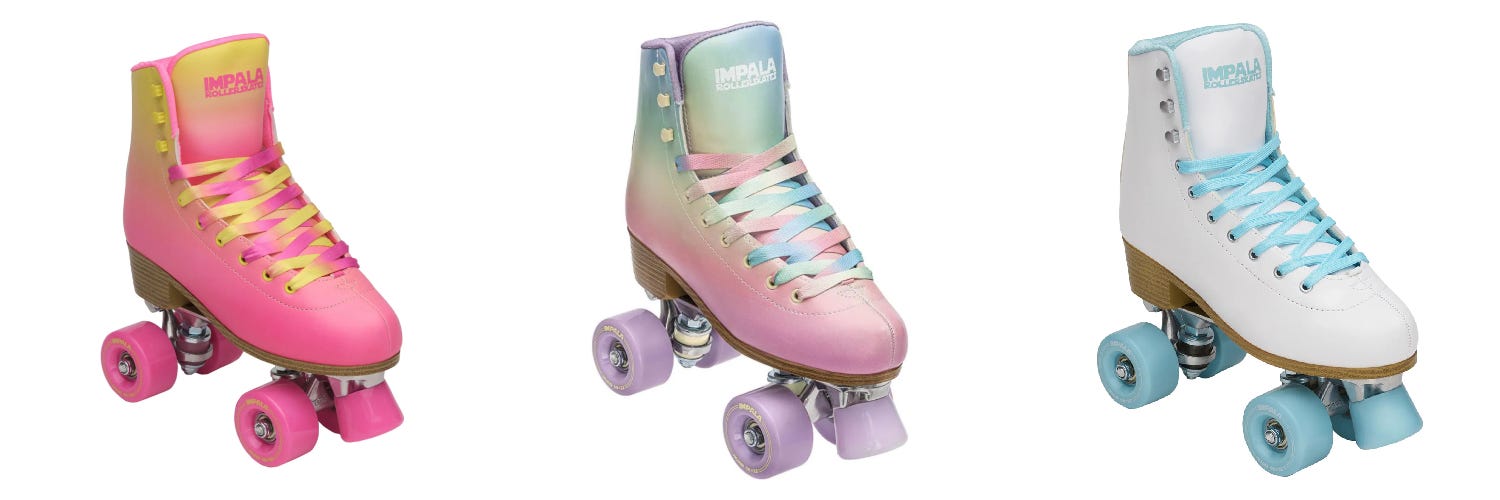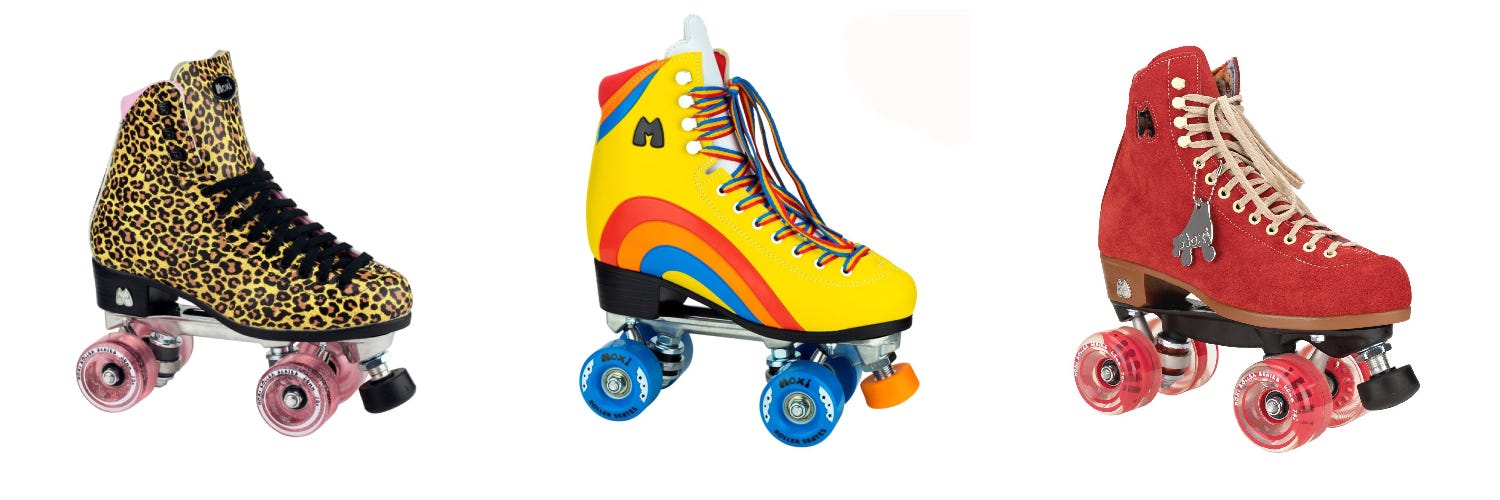Beginners Guide to Quad Skates
Quad skating is a fun activity that’s easy to get started with, but it can take time to master. Whether you’re looking to skate for fun or fitness, it’s important to understand the basics of the sport. This blog will walk you through essential terminology, help you choose your first pair of quad skates and offer safety tips for beginners.

Basic Terminology
Before learning to skate, it’s important to understand some key terms. These terms will help you navigate your skate gear and communicate with other skaters. Here are some important words you’ll encounter:
- Boot: The part of the skate that covers your foot and ankle. It can be high-top or low-top, depending on the style of skate you choose.
- Plate: The metal frame that attaches the wheels to the boot. It is responsible for stability and control. There are various types of plates, including aluminium, plastic, and composite materials.
- Wheels: Quad skates typically have four wheels, two in the front and two in the back. Wheels come in different sizes and hardness to suit different skating environments.
- Bearings: Small metal or ceramic rings inside the wheels allow them to spin smoothly. The better the bearings, the smoother your ride.
- Toe Stop: A rubber stopper at the front of the skate that helps you slow down or stop completely. You can adjust the height and tension of toe stops depending on your preference.
- Kingpin: The bolt that holds the skate’s truck (the part that holds the wheels) to the plate. It allows the skate to turn and pivot.
- Trucks: The metal parts that hold the wheels and connect to the plate. They are responsible for turning and providing stability when you skate.

How to Choose Your First Pair of Quad Skates
Choosing the right pair of quad skates can make all the difference in how comfortable and enjoyable your skating experience is. Here’s what to keep in mind when shopping for your first pair:
Purpose:
- If you plan to skate casually or for fitness, a pair of recreational skates with soft wheels and a comfortable boot is ideal.
- For roller derby or artistic skating, you’ll want specialised skates with better manoeuvrability and support, such as skates with stiffer boots and harder wheels.
- If you’re into outdoor skating, look for skates with larger wheels (around 57-62mm) and softer wheels for better grip on uneven surfaces.
Boot Type:
- High-top boots offer more ankle support, making them a good choice for beginners or those looking for stability.
- Low-top boots provide more freedom and flexibility, making them great for experienced skaters or those doing artistic or freestyle skating.
Fit:
- Make sure your skates fit snugly but not too tight. Skates that are too loose can cause blisters, while skates that are too tight may cause discomfort or restrict movement. If possible, try them on before purchasing.
- Remember, skate sizes may vary slightly between brands, so always check the sizing charts provided by the manufacturer.
Wheels and Bearings:
- Beginners should opt for medium hardness wheels (around 78A to 85A) that can handle both indoor and outdoor conditions.
- ABEC-rated bearings (usually between ABEC 3 and ABEC 7 for beginners) are a good starting point. The higher the rating, the faster and smoother the ride.

Safety Tips for New Skaters
Quad skating is a blast, but safety is key, especially when you’re just starting. Here are some safety tips to help you skate confidently and prevent injuries:
Wear Protective Gear:
- Helmet: Always wear a helmet, especially if you’re new to skating. It protects your head in case of a fall.
- Wrist Guards: These are essential for protecting your wrists, as beginners often use their hands to break a fall.
- Knee and Elbow Pads: Skating involves a lot of motion and some occasional tumbles, so protect your knees and elbows from scrapes and bruises.
Skate in a Safe Environment:
- Choose smooth, flat surfaces to skate on. Avoid areas with cracks or obstacles.
- Start in a quiet, traffic-free area with plenty of space to move around.
Practice Falling:
It may sound counterintuitive, but learning how to fall safely can prevent serious injuries. When you fall, try to bend your knees and roll rather than hitting the ground with stiff limbs. Keep your arms close to your body to avoid wrist injuries.
Take It Slow:
Don’t rush into advanced moves or tricks. Start with learning to balance and glide before progressing to turns, stops, or more complex manoeuvres.

Quad skating is an exciting and rewarding activity that offers something for everyone, whether you're in it for fun, fitness, or performance. By understanding the basic terminology, choosing the right skates, and following safety tips, you'll be well on your way to becoming a confident skater. Remember, practice is key, and as you gain more experience, you’ll enjoy the thrill of mastering new skills and exploring new skating environments. So lace up, stay safe, and most importantly, have fun on your quad skating journey!
For more information, visit our Quad Skate Buying Guide!


